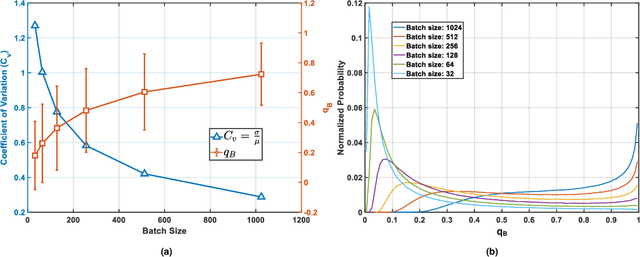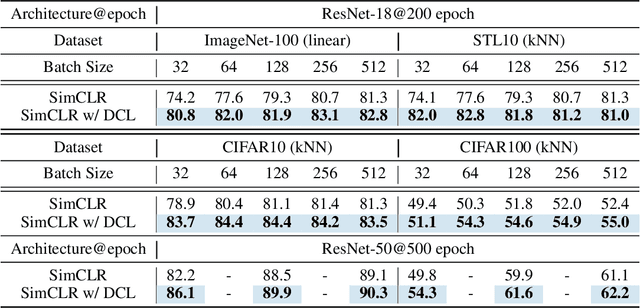Chun-Hsiao Yeh
Seeing from Another Perspective: Evaluating Multi-View Understanding in MLLMs
Apr 21, 2025Abstract:Multi-view understanding, the ability to reconcile visual information across diverse viewpoints for effective navigation, manipulation, and 3D scene comprehension, is a fundamental challenge in Multi-Modal Large Language Models (MLLMs) to be used as embodied agents. While recent MLLMs have shown impressive advances in high-level reasoning and planning, they frequently fall short when confronted with multi-view geometric consistency and cross-view correspondence. To comprehensively evaluate the challenges of MLLMs in multi-view scene reasoning, we propose All-Angles Bench, a benchmark of over 2,100 human carefully annotated multi-view question-answer pairs across 90 diverse real-world scenes. Our six tasks (counting, attribute identification, relative distance, relative direction, object manipulation, and camera pose estimation) specifically test model's geometric correspondence and the capacity to align information consistently across views. Our extensive experiments, benchmark on 27 representative MLLMs including Gemini-2.0-Flash, Claude-3.7-Sonnet, and GPT-4o against human evaluators reveals a substantial performance gap, indicating that current MLLMs remain far from human-level proficiency. Through in-depth analysis, we show that MLLMs are particularly underperforming under two aspects: (1) cross-view correspondence for partially occluded views and (2) establishing the coarse camera poses. These findings highlight the necessity of domain-specific refinements or modules that embed stronger multi-view awareness. We believe that our All-Angles Bench offers valuable insights and contribute to bridging the gap between MLLMs and human-level multi-view understanding. The project and benchmark are publicly available at https://danielchyeh.github.io/All-Angles-Bench/.
Gen4Gen: Generative Data Pipeline for Generative Multi-Concept Composition
Feb 23, 2024Abstract:Recent text-to-image diffusion models are able to learn and synthesize images containing novel, personalized concepts (e.g., their own pets or specific items) with just a few examples for training. This paper tackles two interconnected issues within this realm of personalizing text-to-image diffusion models. First, current personalization techniques fail to reliably extend to multiple concepts -- we hypothesize this to be due to the mismatch between complex scenes and simple text descriptions in the pre-training dataset (e.g., LAION). Second, given an image containing multiple personalized concepts, there lacks a holistic metric that evaluates performance on not just the degree of resemblance of personalized concepts, but also whether all concepts are present in the image and whether the image accurately reflects the overall text description. To address these issues, we introduce Gen4Gen, a semi-automated dataset creation pipeline utilizing generative models to combine personalized concepts into complex compositions along with text-descriptions. Using this, we create a dataset called MyCanvas, that can be used to benchmark the task of multi-concept personalization. In addition, we design a comprehensive metric comprising two scores (CP-CLIP and TI-CLIP) for better quantifying the performance of multi-concept, personalized text-to-image diffusion methods. We provide a simple baseline built on top of Custom Diffusion with empirical prompting strategies for future researchers to evaluate on MyCanvas. We show that by improving data quality and prompting strategies, we can significantly increase multi-concept personalized image generation quality, without requiring any modifications to model architecture or training algorithms.
Magic-Me: Identity-Specific Video Customized Diffusion
Feb 14, 2024Abstract:Creating content for a specific identity (ID) has shown significant interest in the field of generative models. In the field of text-to-image generation (T2I), subject-driven content generation has achieved great progress with the ID in the images controllable. However, extending it to video generation is not well explored. In this work, we propose a simple yet effective subject identity controllable video generation framework, termed Video Custom Diffusion (VCD). With a specified subject ID defined by a few images, VCD reinforces the identity information extraction and injects frame-wise correlation at the initialization stage for stable video outputs with identity preserved to a large extent. To achieve this, we propose three novel components that are essential for high-quality ID preservation: 1) an ID module trained with the cropped identity by prompt-to-segmentation to disentangle the ID information and the background noise for more accurate ID token learning; 2) a text-to-video (T2V) VCD module with 3D Gaussian Noise Prior for better inter-frame consistency and 3) video-to-video (V2V) Face VCD and Tiled VCD modules to deblur the face and upscale the video for higher resolution. Despite its simplicity, we conducted extensive experiments to verify that VCD is able to generate stable and high-quality videos with better ID over the selected strong baselines. Besides, due to the transferability of the ID module, VCD is also working well with finetuned text-to-image models available publically, further improving its usability. The codes are available at https://github.com/Zhen-Dong/Magic-Me.
Debiased Learning for Remote Sensing Data
Dec 24, 2023Abstract:Deep learning has had remarkable success at analyzing handheld imagery such as consumer photos due to the availability of large-scale human annotations (e.g., ImageNet). However, remote sensing data lacks such extensive annotation and thus potential for supervised learning. To address this, we propose a highly effective semi-supervised approach tailored specifically to remote sensing data. Our approach encompasses two key contributions. First, we adapt the FixMatch framework to remote sensing data by designing robust strong and weak augmentations suitable for this domain. Second, we develop an effective semi-supervised learning method by removing bias in imbalanced training data resulting from both actual labels and pseudo-labels predicted by the model. Our simple semi-supervised framework was validated by extensive experimentation. Using 30\% of labeled annotations, it delivers a 7.1\% accuracy gain over the supervised learning baseline and a 2.1\% gain over the supervised state-of-the-art CDS method on the remote sensing xView dataset.
Meta-Personalizing Vision-Language Models to Find Named Instances in Video
Jun 16, 2023Abstract:Large-scale vision-language models (VLM) have shown impressive results for language-guided search applications. While these models allow category-level queries, they currently struggle with personalized searches for moments in a video where a specific object instance such as ``My dog Biscuit'' appears. We present the following three contributions to address this problem. First, we describe a method to meta-personalize a pre-trained VLM, i.e., learning how to learn to personalize a VLM at test time to search in video. Our method extends the VLM's token vocabulary by learning novel word embeddings specific to each instance. To capture only instance-specific features, we represent each instance embedding as a combination of shared and learned global category features. Second, we propose to learn such personalization without explicit human supervision. Our approach automatically identifies moments of named visual instances in video using transcripts and vision-language similarity in the VLM's embedding space. Finally, we introduce This-Is-My, a personal video instance retrieval benchmark. We evaluate our approach on This-Is-My and DeepFashion2 and show that we obtain a 15% relative improvement over the state of the art on the latter dataset.
Decoupled Contrastive Learning
Oct 23, 2021



Abstract:Contrastive learning (CL) is one of the most successful paradigms for self-supervised learning (SSL). In a principled way, it considers two augmented "views" of the same image as positive to be pulled closer, and all other images negative to be pushed further apart. However, behind the impressive success of CL-based techniques, their formulation often relies on heavy-computation settings, including large sample batches, extensive training epochs, etc. We are thus motivated to tackle these issues and aim at establishing a simple, efficient, and yet competitive baseline of contrastive learning. Specifically, we identify, from theoretical and empirical studies, a noticeable negative-positive-coupling (NPC) effect in the widely used cross-entropy (InfoNCE) loss, leading to unsuitable learning efficiency with respect to the batch size. Indeed the phenomenon tends to be neglected in that optimizing infoNCE loss with a small-size batch is effective in solving easier SSL tasks. By properly addressing the NPC effect, we reach a decoupled contrastive learning (DCL) objective function, significantly improving SSL efficiency. DCL can achieve competitive performance, requiring neither large batches in SimCLR, momentum encoding in MoCo, or large epochs. We demonstrate the usefulness of DCL in various benchmarks, while manifesting its robustness being much less sensitive to suboptimal hyperparameters. Notably, our approach achieves $66.9\%$ ImageNet top-1 accuracy using batch size 256 within 200 epochs pre-training, outperforming its baseline SimCLR by $5.1\%$. With further optimized hyperparameters, DCL can improve the accuracy to $68.2\%$. We believe DCL provides a valuable baseline for future contrastive learning-based SSL studies.
 Add to Chrome
Add to Chrome Add to Firefox
Add to Firefox Add to Edge
Add to Edge